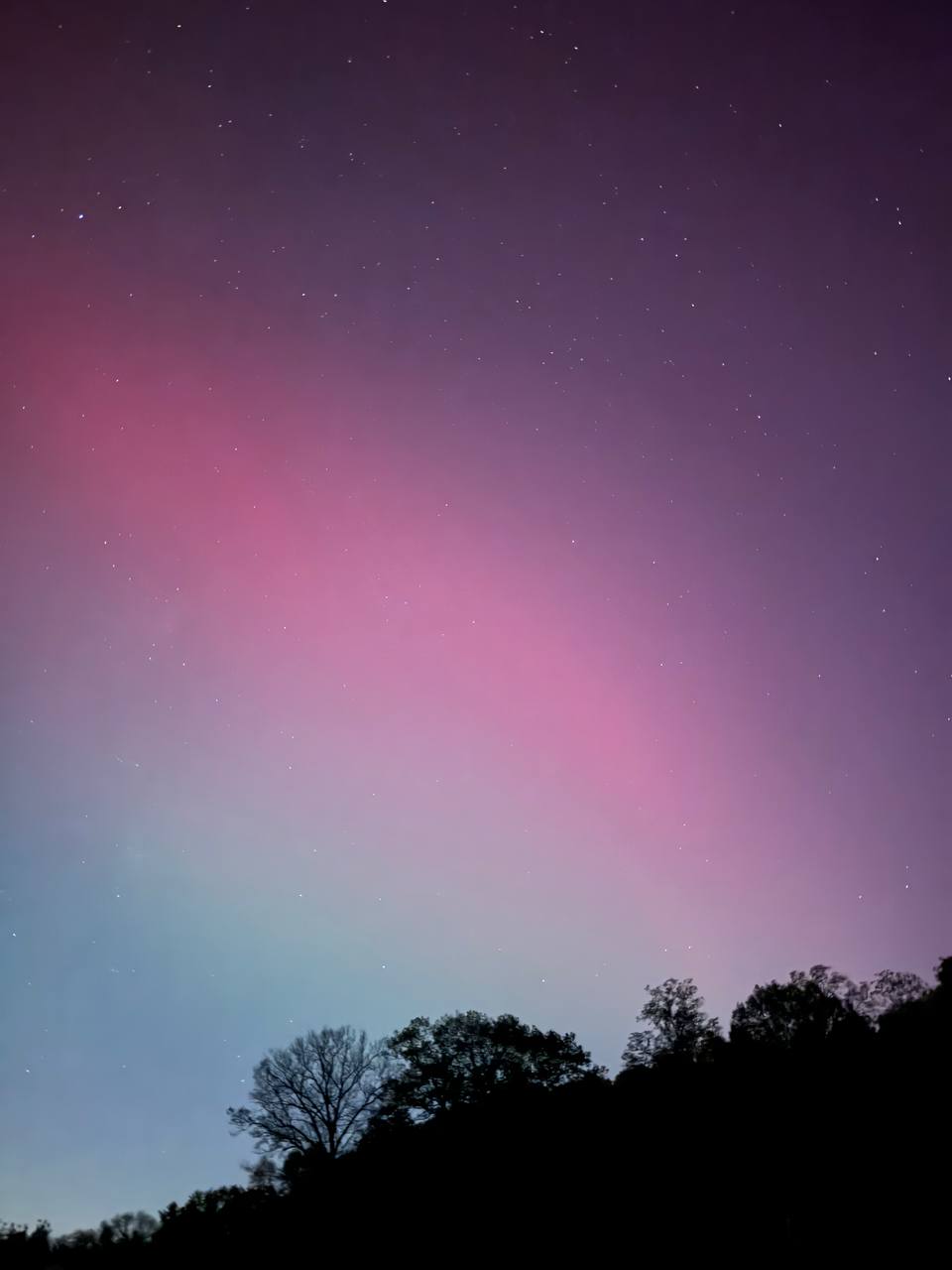In a rare and dazzling event, the aurora borealis, or northern lights, painted the skies over New York City and surrounding areas on Thursday evening, bringing a burst of color to urban skylines. A powerful geomagnetic storm, fueled by a coronal mass ejection (CME) from the sun, triggered the luminous display, allowing residents from New York to Northern New Jersey to witness a phenomenon typically reserved for more northern latitudes.
The northern lights, commonly seen in regions close to the Arctic Circle like Norway, Iceland, and Canada, rarely make an appearance this far south. But on October 10, 2024, as dusk settled over the city, residents in places like Hoboken, Jersey City, and beyond were treated to hues of pink, purple, and green dancing across the sky. According to NOAA's Space Weather Prediction Center, this storm was classified as a G4, indicating a severe geomagnetic event capable of disrupting technology and affecting Earth's magnetosphere.
The stunning display was caused by the interaction of solar particles with Earth's atmosphere. When a CME-a massive burst of solar wind and magnetic fields-strikes the planet's magnetic field, it sets off a chain reaction that lights up the sky. These charged particles collide with gases like oxygen and nitrogen in the atmosphere, creating vivid light displays. "Oxygen generates the green and red colors, while nitrogen is responsible for the purples and blues," explained NASA in its overview of aurora phenomena.

This week's aurora sightings were among the most widespread in recent memory, visible from states as far south as Alabama and Northern California. Meteorologists had been predicting the possibility of the aurora borealis appearing in the northeastern U.S., but even seasoned observers were surprised by the intensity and clarity of the lights. "The northern lights are a rare treat for us here in the tri-state area," said Shawn Dahl, coordinator for NOAA's Space Weather Prediction Center, emphasizing the unusual nature of the event.

The celestial show wasn't limited to just New York and New Jersey. Reports came in from across the eastern U.S., with sightings spanning from Maine to Washington, D.C. The vibrant skies created a spectacular backdrop, capturing the attention of thousands who normally have to travel much farther north to catch a glimpse of this natural phenomenon. The National Oceanic and Atmospheric Administration (NOAA) had forecasted the solar storm earlier in the week, alerting the public to the increased chances of seeing auroras farther south than usual.

Geomagnetic storms like the one responsible for Thursday's light display can have significant effects beyond the visual spectacle. They can disrupt communication systems, interfere with GPS signals, and even pose risks to power grids. "We monitor these storms closely because, at their most severe, they can lead to widespread voltage control problems or even complete power grid failures," said Dahl. While this storm did not reach the most critical levels, the possibility of technological disruptions remains a concern during such events.
The farther south the northern lights reach, the more their colors shift due to the Earth's curvature affecting the height at which the particles interact with the atmosphere. This is why those in lower latitudes often observe more red hues compared to the traditional green shades seen closer to the poles. This week's event provided a rare opportunity for many in urban areas to see the red-tinted lights with the naked eye, a sight usually reserved for those in remote, northern regions.
Last month, a similar geomagnetic event allowed the aurora borealis to be visible as far south as Arizona, Mississippi, and Texas, indicating an increase in solar activity as the sun approaches its solar maximum phase. Solar maximum is the peak of the sun's 11-year cycle when solar flares and CMEs are most frequent, leading to more pronounced space weather phenomena on Earth. Experts from NOAA predict that the current Solar Cycle 25 will reach its peak between November 2024 and March 2026, which could mean even more frequent auroral displays in the coming years.
For many in the tri-state area, this unexpected encounter with the northern lights provided a moment of awe and a reminder of the dynamic nature of space weather. Social media buzzed with images and videos of the sky lit up in colors, with many users expressing disbelief at witnessing the phenomenon from their own backyards. "I've never seen anything like this in my lifetime," one New Jersey resident posted on Twitter, echoing the sentiments of many who shared their own visual experiences of the event.
As the sun's activity continues to ramp up in the coming months, experts caution that while these light displays are mesmerizing, they are also a reminder of the potential impact solar storms can have on technology and infrastructure. "Space weather events of this magnitude are a double-edged sword," Dahl noted. "They give us spectacular skies, but they also pose risks that we need to be prepared for."






